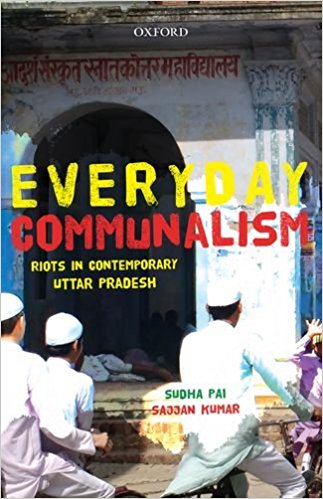This book is about three riots—two in eastern UP, one each in Mau (2005) and Gorakhpur (2007) districts, and the third one in Muzaffarnagar and Shamli (2013) districts in western UP. It largely draws upon secondary sources, interviews, discussions and field work, and attempts to address changes in political economy and communal mobilization in eastern and western UP, the former in the urban and the latter in rural settings. The principal argument of the book is that notwithstanding differences in level of development in eastern UP and western UP, both regions share a common feature about communal riots: institutionalization of everyday communalism.
The claim is made that unlike communal riots in the preceding periods, those since the 2000s in UP have become an everyday affair; communal polarization now takes place through using constant, low-key everyday petty incidents by the efforts of the BJP, RSS and its affiliate organizations. The changes in political economy, especially agrarian crisis in western UP and decline of handloom industries and weakening of high caste criminal mafias and rise of pasmanda (backward class) movement in eastern UP, rising aspirations of and despondency among Jat youths have provided fertile ground for the communal forces to polarize society on communal lines. Unlike before, when riots, would occur at one point of time, followed by their non-occurrence and occurring again, everyday communalism has become a daily affair in which ‘communal common sense’ is used to communally polarize communities.

